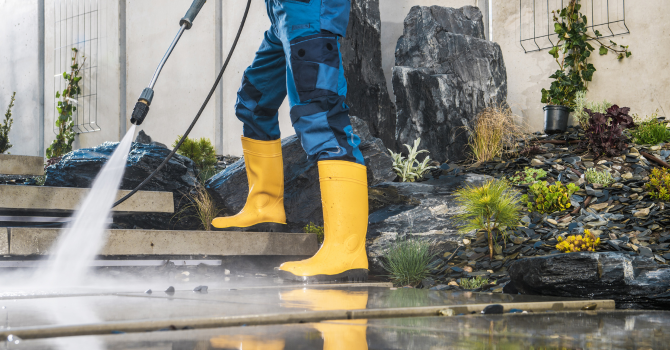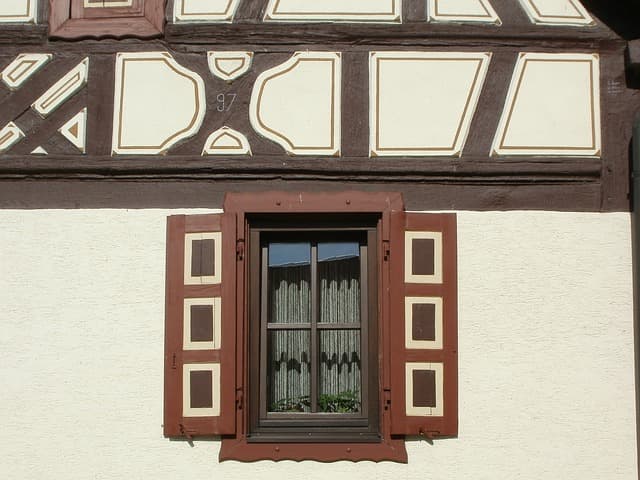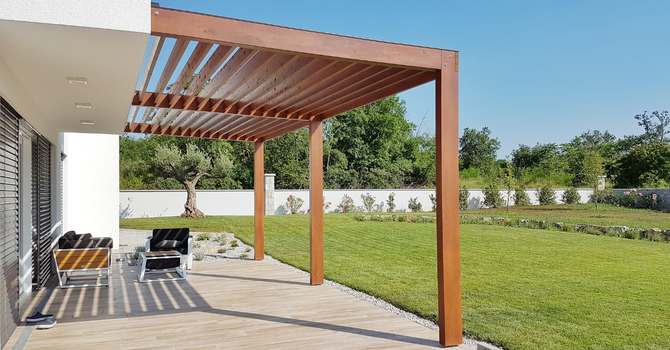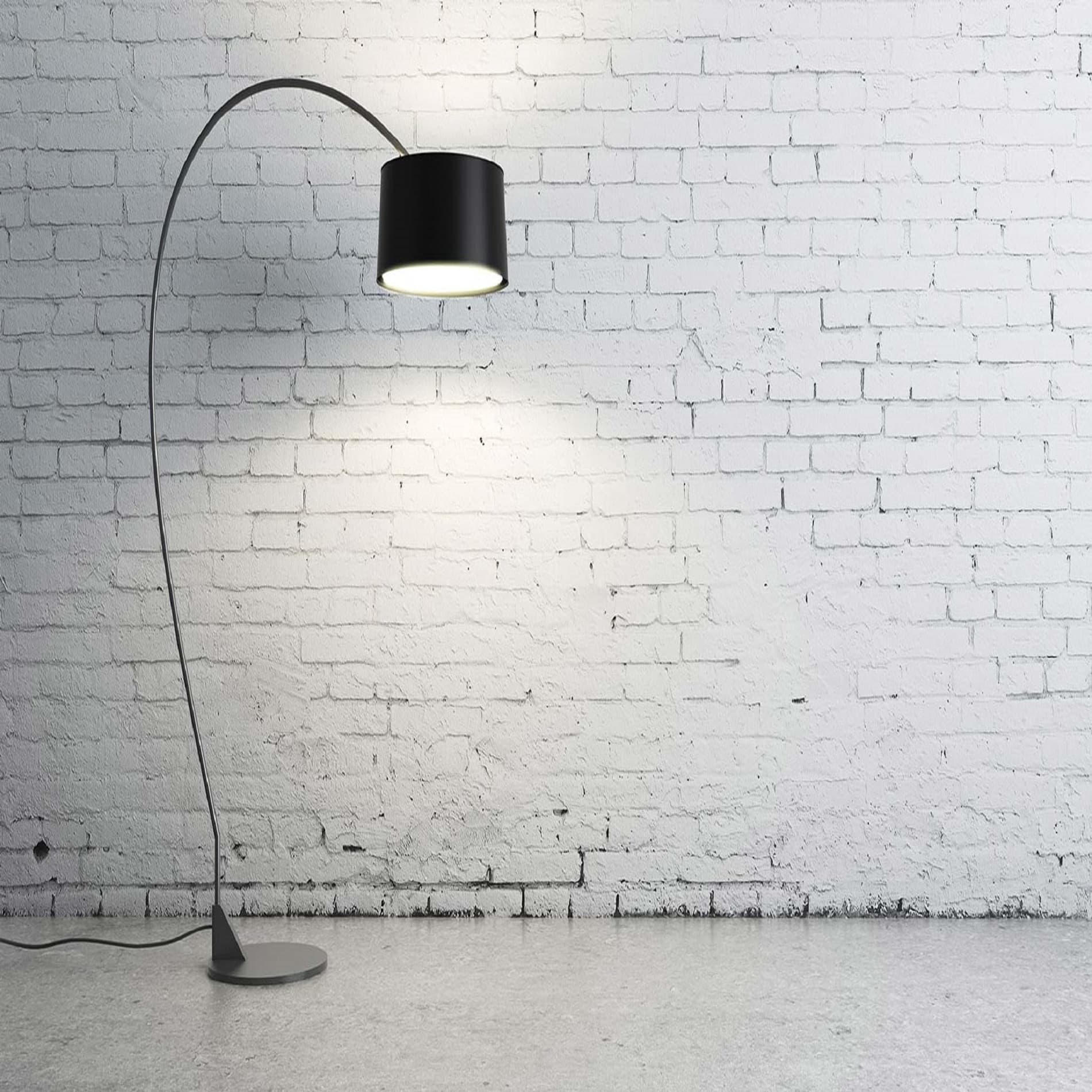Are you looking for a contractor?
Submit our quick form and get quotes now!
Table of Contents
5 min read
How to Use a Pressure Washer


5 min read
How to Use a Pressure Washer
Exterior renovationsHow to Use a Pressure Washer
Pressure washers are a quick and excellent way to get rid of debris that has built up over winter, as well as other dirt and grime that happens to be stuck on your outdoor surfaces. Driveways, cars, the side of your home and concrete floors can all benefit from a pressure wash, and the end results will surely leave friends and neighbours wondering how you managed to get things so clean.
These instruments can be purchased or rented for a day or two depending on the needs of the homeowners. Once acquired, it is important to know the correct method to use a pressure washer. Although straightforward to use, a pressure washer is a powerful machine that needs to be handled correctly and safely. If you’re all ready to clean using this type of equipment, follow our concise steps on how to get the cleanest surfaces with the smallest amount of damage!
Here’s how to correctly operate a pressure washer!

Source: Canva
1-Know your machine!
There are two types of pressure washers, and these are gas powered and electric powered. Regardless of how they are powered, pressure washers require access to a garden hose, as they will pressurize the water and force it out through the spray wand. The cleaning job will directly depend on the amount of power distributed to the wand, and higher power will cause the water to work harder.
Electric pressure washers should be employed for lighter cleaning jobs, such as car washing or floor cleaning. Electric powered washers usually cost less than gas-powered washers. Make sure when using an electrically powered pressure washer that it is connected to an outlet that is protected by a ground fault circuit interrupter, as this will help homeowners to avoid electrocution.
Gas powered pressure washers are more common than electric washers, and this type is made for tough cleaning jobs as they deliver higher power. Since this type of washer uses more power, more water is required. Gas-powered washers are best to rent, as buying one new can often cost a pretty penny.
2- Preparations before using a pressure washer

Source: Canva
Before starting the job, make sure you are dressed for it. Wearing the proper gear to operate your pressure washer is important, and this includes wearing protective footwear as well as safety goggles. Footwear should be compatible with wet surfaces, so avoid anything that isn’t slip-proof, as you won’t want to take a fall while using your pressure washer!
Depending on the job, long pants and sleeves are also recommended, as there is a risk of dirt and debris flying! Also, prepare the area that you’re washing by removing all breakable or sensitive objects from around the surface. If your pressure washer is gas, start by filling it with engine oil or gasoline. Hold the start grip and pull to start the engine. An electric power washer will simply need to be plugged into a properly grounded outlet.
3- Prepare the pressure washer
Next, connect your pressure washer to the garden hose. There will be an available inlet in your pressure water where the hose should easily fit. Make sure to turn on the water supply before starting the pressure washer, as this will avoid causing any damage to the washer’s pump. Then, fill the bucket that will hold your cleaning solution.
Choose a solution that has been specifically made for use in the pressure washer. Now, you will want to attach the proper spray tip to the pressure washer nozzle. Certain tips are used for certain things, and will drastically affect what you clean as well as how you clean it. Choose the right tip for the right job and you’re all set to start pressure washing!
4- Wash!

Source: Canva
Now, position the spray tip between 2 to 3 feet from the surface you are planning on washing. As you begin, move the tip gradually closer to the surface. Bear in mind that having the tip too close to the surface risks damaging it or causing water to spread underneath which could lead to deterioration later. Further, hold the nozzle of the pressure washer at a 45-degree angle, helping to steer debris that has come loose away from your person.
Next, pull the trigger and begin spraying the surface, moving in a side-to-side motion and never resting in one spot for too long. If you are only using water, work in a top to bottom motion in segments. If you are applying detergent, allow it to soak into the surface for a moment before rinsing it away with water though make sure that it doesn’t dry as this will stain the surface! Clean surrounding surfaces if any spray from the washer has affected them, including wiping down windows and doors.
Once you have completely cleaned the surface and your job is done, follow the pressure washer or manufacturer instructions to flush the system of detergent.
Get 3 renovation quotes for your pressure washing project
RenoQuotes.com can help you get quotes for. By submitting your pressure washing project to us, we’ll put you in contact with top-rated contractors. Fill in the form on the homepage (it only takes a few minutes), and you will get estimates from trusted professionals.
Dial 1-844 828-1588 to speak with one of our customer service representatives.
Last modified 2023-11-07
Looking for something else?
Related articles
The latest industry news, interviews, technologies, and resources.

RenoQuotes.com • 15 Mar 2024
For most, buying a home is the investment of a lifetime. Homes are expensive, and ensuring the property's current condition is up to par is a must before making any financial commitments. Although you may find that the house you are planning on buying has some kinks, note that flaws can always be fixed.

N/A • 07 Nov 2023
Wood window frames add a naturally beautiful element to both the interior and exterior of your home. However, as with everything of natural beauty, wood needs to be carefully looked after so that it can continue to have pure charm and appeal. You can easily extend the life of wood frames by making sure they are properly inspected and maintained, saving time and money in the long run.

RenoQuotes.com • 05 Dec 2023
A pergola is a great alternative to a traditional patio umbrella. Not only does this sunshade provide a more aesthetic appeal compared to the latter, but it also offers a wide range of options in terms of materials and sizes. On top of that, it doubles as a permanent patio lounge area, while still shielding you from the elements. Despite being exposed to Canada's harsh East Coast climate and other elements, preserving its condition for many years to come requires meticulous care and maintenance.

N/A • 07 Nov 2023
Although summer is drawing to a close, it’s never too late to plan how to decorate the exterior of your home. Whether it’s a new construction project or you’re the owner of an apartment, you have several options to refresh your exterior.

RenoQuotes.com • 07 Nov 2023
The clay composition of brick is what gives it its characteristic earthy colour while also delivering enormous strength and durability. While brick does outlast other materials such as wood, over time a brick wall’s worst enemies are moisture and extreme temperature changes. These two natural elements that every Canadian must deal with annually can really compromise the mortar over time, leaving cracks and stains.